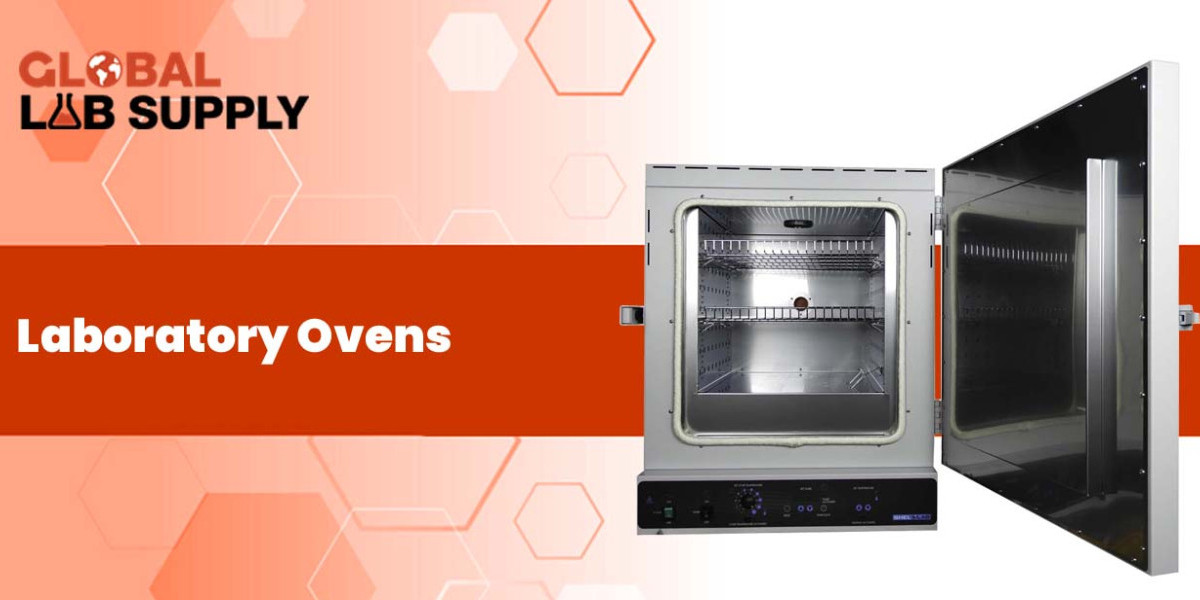Vacuum ovens play a crucial role in various laboratory applications, offering precise and controlled environments for processes such as drying, heat treatment, and material testing. Understanding the working principles, components, and features of vacuum ovens is essential to harnessing their full potential in scientific research and experimentation. In this comprehensive guide, we will delve into the science behind vacuum ovens, explore their diverse applications, provide insights into selecting the right model, outline operating procedures, and offer maintenance and troubleshooting tips. Whether you are a scientist, researcher, or technician, this ultimate guide aims to equip you with the knowledge needed to effectively utilize vacuum ovens in your laboratory work.
What is a Vacuum Oven?
Picture this: you have a sample that needs to be dried or treated in a laboratory setting. But wait, you don't want to expose it to the harsh conditions of the outside world. That's where vacuum ovens come to the rescue! A vacuum oven is a nifty device that allows you to carry out various processes, like drying, heat treatment, and material testing, within a controlled environment.
The Significance of Vacuum Ovens in Laboratory Settings
Why are vacuum ovens so important in laboratories, you ask? Well, think about it this way: they provide a way to manipulate the conditions in which samples are treated. By operating in a vacuum, these ovens can remove moisture or other unwanted substances from sensitive materials without subjecting them to high temperatures or exposing them to oxygen. This makes vacuum ovens an essential tool in scientific research, quality control, and various other laboratory applications.
The Working Principles of Vacuum Ovens: Understanding the Science Behind the Technology
How Do Vacuum Ovens Operate?
So, how do these magical ovens actually work? It's quite simple, really. Vacuum ovens use a combination of reduced pressure and heat to carry out the desired processes. By creating a vacuum inside the oven, the pressure is lowered, which in turn lowers the boiling point of liquids present in the sample. This allows the moisture to evaporate at a lower temperature, avoiding any potential damage to the material being treated.
The Role of Reduced Pressure in Vacuum Ovens
Reduced pressure is the secret sauce of vacuum ovens. By decreasing the pressure inside the oven, you create an environment where liquids can transition directly from a solid to a gas, bypassing the liquid state altogether. This process, known as sublimation, is particularly useful when dealing with heat-sensitive materials that need to be dried or treated gently.
Key Components and Features of Vacuum Ovens: Exploring the Different Parts and Functions
Understanding the Structure of Vacuum Ovens
Let's take a closer look at what makes up a vacuum oven. These ovens are typically made up of a robust outer shell to provide insulation and prevent heat loss. Inside, you'll find shelves or trays to hold your samples, as well as heating elements to generate the necessary warmth.
Essential Components of Vacuum Ovens
Besides the basic structure, vacuum ovens also come equipped with essential components like a vacuum pump and pressure gauge to control and monitor the vacuum levels. Additionally, they feature temperature controls and timers to ensure precise and accurate processing.
Notable Features and Their Benefits
Some vacuum ovens come with fancy features to make your life easier. Look out for features like programmable controllers, digital displays, and safety features such as overtemperature protection. These extra touches can greatly enhance your user experience and ensure reliable and safe operation.
Applications of Vacuum Ovens in Laboratories: A Comprehensive Look at Their Diverse Uses
Drying and Dehydration Processes in Vacuum Ovens
One of the primary applications of vacuum ovens is drying and dehydration. Whether you're removing moisture from organic samples, preserving delicate biological materials, or drying out electronic components, vacuum ovens provide an ideal environment for achieving efficient and controlled drying processes.
Heat Treatment and Material Testing Applications
In addition to drying, vacuum ovens play a crucial role in heat treatment processes. By subjecting materials to controlled heating under vacuum conditions, you can achieve specific changes in their physical properties. This makes vacuum ovens invaluable for material testing, annealing, stress relieving, and other heat treatment applications.
Vacuum Oven Applications in Scientific Research
Last but not least, vacuum ovens find widespread use in scientific research. From sample preparation for electron microscopy to removing residual solvents from chemical compounds, these versatile ovens contribute to various research endeavors across different fields, including chemistry, biology, and materials science.
Remember, vacuum ovens are the unsung heroes of the laboratory world, quietly carrying out essential processes to ensure accurate results and safe handling of sensitive materials. So the next time you're in a lab and spot that trusty vacuum oven in the corner, give it a little nod of appreciation for its role in making your experiments a success!
Factors to Consider When Choosing a Vacuum Oven: Essential Criteria for Selecting the Right Model
Capacity and Size Considerations
When it comes to choosing a vacuum oven, size does matter. Consider the amount and size of the samples you'll be working with to determine the right capacity for your needs. You don't want to end up with a tiny oven that can barely fit a test tube or a massive one that takes up too much space in your lab.
Temperature Range and Control
Temperature control is crucial in laboratory applications. Make sure the vacuum oven you choose offers a temperature range that suits your specific requirements. Whether you need it for low-temperature applications or high-temperature experiments, finding a model with precise temperature control will ensure accurate and consistent results.
Vacuum Level and Pumping Speed
The vacuum level and pumping speed are important factors to consider, especially if you're working with volatile substances or need rapid drying times. Look for a vacuum oven that can achieve and maintain the desired vacuum level efficiently. Pay attention to the pumping speed as well, as it affects the overall drying time.
Safety Features and Compliance
Safety should always be a top priority in any laboratory setting. When selecting a vacuum oven, look for models with safety features such as over-temperature protection, pressure relief valves, and explosion-proof construction. Additionally, ensure that the oven complies with relevant safety standards and regulations to avoid any potential hazards.
Operating Procedures for Vacuum Ovens: Step-by-Step Guide to Optimizing Performance
Preparing the Vacuum Oven for Operation
Before using the vacuum oven, it's crucial to ensure that it is clean and free from any contaminants. Wipe down the interior with a suitable cleaning solution and make sure the shelves are properly aligned. Check that the gaskets are in good condition and properly seated to ensure an airtight seal.
Loading and Unloading Samples
When loading samples into the vacuum oven, ensure they are placed in suitable containers that can withstand the vacuum environment. Avoid overloading the shelves, as this can impede the airflow and result in uneven drying. When unloading, use appropriate tools to handle hot samples and allow them to cool before further manipulation.
Setting Temperature and Pressure Parameters
Before starting the process, set the desired temperature and pressure parameters on the oven's control panel. It's important to follow the manufacturer's guidelines and any specific instructions for your experiment. Allow the oven to reach the desired temperature and pressure before introducing the samples.
Monitoring and Adjusting the Process
Throughout the drying process, monitor the temperature and pressure inside the oven regularly. Make any necessary adjustments to maintain the desired conditions. Be attentive to any abnormal readings or fluctuations and take appropriate action to ensure optimal performance.
Maintenance and Troubleshooting Tips for Vacuum Ovens: Ensuring Longevity and Efficiency
Regular Cleaning and Preventive Maintenance
To keep your vacuum oven performing at its best, regular cleaning and preventive maintenance are essential. Clean the interior after each use to remove any residue or spills. Additionally, follow the manufacturer's guidelines for maintenance tasks such as lubricating hinges, checking seals, and inspecting electrical connections.
Common Issues and Troubleshooting Techniques
Even with proper maintenance, issues may arise while using a vacuum oven. Some common problems include poor vacuum levels, temperature fluctuations, or malfunctioning control panels. When troubleshooting, consult the oven's manual,contact the manufacturer for guidance, or seek assistance from a qualified technician to resolve any issues effectively. Remember, when in doubt, don't hesitate to ask for help to avoid further complications.
In conclusion, vacuum ovens are indispensable tools in laboratory settings, providing controlled conditions necessary for a wide range of applications. By grasping their working principles, understanding key components, and following proper operating procedures, researchers can optimize the performance of vacuum ovens and achieve accurate and reliable results. Additionally, regular maintenance and troubleshooting techniques ensure longevity and efficiency of these valuable instruments. With this ultimate guide as a reference, scientists can confidently utilize vacuum ovens to advance their scientific endeavors and contribute to the progress of various fields.
Original Sources: https://globallabsupply.mystrikingly.com/blog/the-ultimate-guide-to-understanding-vacuum-ovens-in-laboratory-applications







